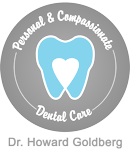Anesthesia
Anesthesia is a means of pain and anxiety management used in a broad range of health procedures, including dentistry. Dental anesthesia in [city] encompasses a spectrum of treatments, each of which offers different benefits to the patient. There are several types of anesthesia, including:
- Local anesthetics – Small injections designed to numb the nerves in the gums and inside the teeth. Patients are awake and fully aware of their surroundings, but they feel little or no pain.
- Sedation – Sedation can be used in combination with local anesthetics to help calm patients before and during office treatments. Sedation may be in the form of a pre-visit anti-anxiety medication or nitrous oxide administered in the office.
- General anesthesia – Administered via IV, this type of anesthesia causes [city] patients to fall into a deep sleep. General anesthesia is reserved for highly invasive or long dental procedures.

Did you know…that Lidocaine – the primary local anesthetic used in U.S. dentistry – has been used for dental pain management since the 1950’s? But the history of general anesthesia can be traced all the way back to the 1840’s, when the first person was “put to sleep” for a health procedure. It was Dr. William T. G. Morton – a dentist – who first attempted to use a general anesthetic to extract a tooth from a patient who was in a great deal of pain. The procedure was highly successful and began a revolution in medical and dental anesthesia. |
Frequently Asked Questions
What type of anesthesia will I need for my [city] dental procedure?
Dentists usually assess the type of anesthesia necessary based on the nature of the procedure and anxiety level of the patient. If you are visiting the dentist for a routine filling or a crown, you’ll probably only require a local anesthetic. If you experience moderate to severe anxiety prior to and during your dental appointment, you may be prescribed a sedative to take in combination with a local anesthetic. If, however, your procedure is more invasive, such as an impacted wisdom tooth extraction, you may be placed under general anesthesia.
What should I expect under anesthesia?
A local anesthetic will cause your mouth, teeth and gums to become numb for several hours. You may feel heat, cold or pressure, but you will not feel pain. A sedative, such as nitrous oxide, will cause you to feel groggy, relaxed or even euphoric, but these feelings wear off almost immediately at the end of your procedure when the dentist administers oxygen. If you are under general anesthesia, you will have no memory of your procedure and will not be conscious for any of it.
Are there any special instructions I need to follow before or after being anesthetized?
If you will be put under general anesthesia, you will need to avoid eating and drinking the night before and morning of your procedure. You may also need to submit to some screenings to ensure you are healthy enough for general anesthesia. After you awake, you will not be allowed to drive yourself home, so be sure to bring a responsible driver with you to your appointment.












